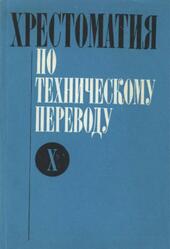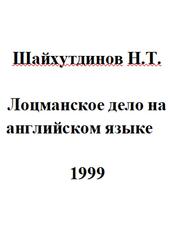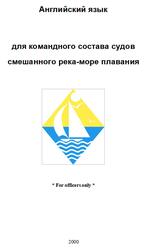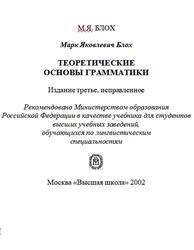Настоящее пособие освещает ключевые проблемы стилистики английского языка и включает главы: предмет и задачи курса, выразительные средства языка, грамматическая стилистика, теория функциональных стилей, основы стилистики декодирования, глоссарий стилистических терминов. В каждой главе актуализация теоретических положений опирается на систему практических заданий, которые могут быть использованы как на семинарских занятиях, так и для самостоятельной работы.
Учебное пособие предназначено для студентов факультетов иностранных языков, а также всех, кто изучает дисциплину «Стилистика английского языка».
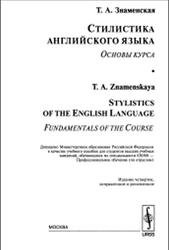
Problems of stylistic research.
Units of language on different levels are studied by traditional branches of linguistics such as phonetics that deals with speech sounds and intonation; lexicology that treats words, their meaning and vocabulary structure, grammar that analyses forms of words and their function in a sentence which is studied by syntax. These areas of linguistic study are rather clearly defined and have a long-term tradition of regarding language phenomena from a level-oriented point of view. Thus the subject matter and the material under study of these linguistic disciplines are more or less clear-cut.
It gets more complicated when we talk about stylistics. Some scholars claim that this is a comparatively new branch of linguistics, which has only a few decades of intense linguistic interest behind it. The term stylistics really came into existence not too long ago. In point of fact the scope of problems and the object of stylistic study go as far back as ancient schools of rhetoric and poetics.
The problem that makes the definition of stylistics a curious one deals both with the object and the material of studies. When we speak of the stylistic value of a text we cannot proceed from the level-biased approach that is so logically described through the hierarchical system of sounds, words and clauses. Not only may each of these linguistic units be charged with a certain stylistic meaning but the interaction of these elements, as well as the structure and composition of the whole text are stylistically pertinent.
Contents
Preface
Chapter 1. The Object of Stylistics
1.1. Problems of stylistic research
1.2. Stylistics of language and speech
1.3. Types of stylistic research and branches of stylistics
1.4. Stylistics and other linguistic disciplines
1.5. Stylistic neutrality and stylistic colouring
1.6. Stylistic function notion
Practice Section
Chapter 2. Expressive Resources of the Language
2.1. Expressive means and stylistic devices
2.2. Different classifications of expressive means
2.2.1. Hellenistic Roman rhetoric system.
2.2.2. Stylistic theory and classification of expresssive means by G. Leech
2.2.3. I. R. Galperin's classification of expressive means and stylistic devices
2.2.4. Classification of expressive means and stylistic devices by Y. M. Skrebnev
Practice Section
Chapter 3. Stylistic Grammar
3.1. The theory of grammatical gradation. Marked, semi-marked and unmarked structures
3.2. Grammatical metaphor and types of grammatical transposition
3.3. Morphological stylistics. Stylistic potential of the parts of speech
3.3.1. The noun and its stylistic potential
3.3.2. The article and its stylistic potential
3.3.3. The stylistic power of the pronoun
3.3.4. The adjective and its stylistic functions
3.3.5. The verb and its stylistic properties
3.3.6. Affixation and its expressiveness
3.4. Stylistic syntax
Practice Section
Chapter 4. The Theory of Functional Styles
4.1. The notion of style in functional stylistics
4.2. Correlation of style, norm and function in the language
4.3. Language varieties: regional, social, occupational
4.4. An overview of functional style systems
4.5. Distinctive linguistic features of the major functional styles of English
4.5.1. Literary colloquial style
4.5.2. Familiar colloquial style
4.5.3. Publicist (media) style
4.5.4. The style of official documents
4.5.5. Scientific/academic style
Practice Section
Chapter 5. Decoding Stylistics and Its Fundamental Notions
5.1. Stylistics of the author and of the reader. The notions of encoding and decoding
5.2. Essential concepts of decoding stylistic analysis and types of foregrounding
5.2.1. Convergence
5.2.2. Defeated expectancy
5.2.3. Coupling
5.2.4. Semantic field
5.2.5. Semi-marked structures
Practice Section
Test Yourself Section
Keys
Glossary for the Course of Stylistics
Sources
Dictionaries
List of Authors and Publications Quoted.
Бесплатно скачать электронную книгу в удобном формате, смотреть и читать:
Скачать книгу Стилистика английского языка, Основы курса, Знаменская Т.А., 2006 - fileskachat.com, быстрое и бесплатное скачивание.
Скачать djvu
Ниже можно купить эту книгу, если она есть в продаже, и похожие книги по лучшей цене со скидкой с доставкой по всей России.Купить книги
Скачать - djvu - Яндекс.Диск.
Дата публикации:
Теги: учебник по английскому языку :: английский язык :: Знаменская
Смотрите также учебники, книги и учебные материалы:
Следующие учебники и книги:
 Machine Learning with R Cookbook, Yu-Wei Chiu — This book is ideal for those of you who want to learn how to use R for machine learning and … Книги по английскому языку
Machine Learning with R Cookbook, Yu-Wei Chiu — This book is ideal for those of you who want to learn how to use R for machine learning and … Книги по английскому языку Учебно-методическое пособие по фонетике английского языка, Для студентов 1 и 2 курсов, Акимова Т.В., 2010 — Настоящее пособие представляет собой сборник упражнений и текстов по фонетике английского языка. Составлено в соответствии с программой обучения английскому языку … Книги по английскому языку
Учебно-методическое пособие по фонетике английского языка, Для студентов 1 и 2 курсов, Акимова Т.В., 2010 — Настоящее пособие представляет собой сборник упражнений и текстов по фонетике английского языка. Составлено в соответствии с программой обучения английскому языку … Книги по английскому языку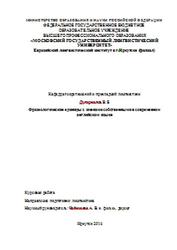 Фразеологические единицы с именами собственными в современном английском языке, Дугаржапов В.Б., 2014 — В настоящее время изучение иностранных языков широко распространено в нашей стране, а хорошее знание языка невозможно без знания его фразеологии. … Книги по английскому языку
Фразеологические единицы с именами собственными в современном английском языке, Дугаржапов В.Б., 2014 — В настоящее время изучение иностранных языков широко распространено в нашей стране, а хорошее знание языка невозможно без знания его фразеологии. … Книги по английскому языку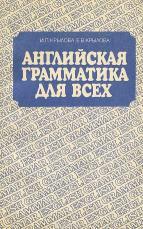 Английская грамматика для всех, справочное пособие, Крылова И.П., Крылова Е.В., 1989 — Цель пособия в доступной форме изложить и объяснить все существенные морфологические и синтаксические особенности грамматического строя современного английского языка, которые … Книги по английскому языку
Английская грамматика для всех, справочное пособие, Крылова И.П., Крылова Е.В., 1989 — Цель пособия в доступной форме изложить и объяснить все существенные морфологические и синтаксические особенности грамматического строя современного английского языка, которые … Книги по английскому языку
Предыдущие статьи:
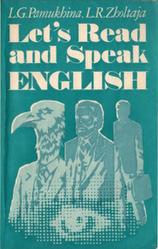 Будем читать и говорить по-английски, Памухииа Л.Г., Жолтая Л.Р., 1983 — Пособие, составленное на материале рассказов английских и американских писателей XX века, ставит своей целью развитие навыков чтения и устной речи. … Книги по английскому языку
Будем читать и говорить по-английски, Памухииа Л.Г., Жолтая Л.Р., 1983 — Пособие, составленное на материале рассказов английских и американских писателей XX века, ставит своей целью развитие навыков чтения и устной речи. … Книги по английскому языку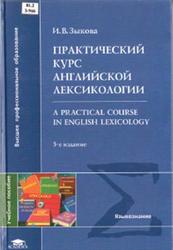 Практический курс английской лексикологии, Зыкова И.В., 2008 — Учебное пособие охватывает всю программу курса лексикологии английского языка. В нем рассматриваются важнейшие проблемы лексикологии в свете ведущих принципов современной … Книги по английскому языку
Практический курс английской лексикологии, Зыкова И.В., 2008 — Учебное пособие охватывает всю программу курса лексикологии английского языка. В нем рассматриваются важнейшие проблемы лексикологии в свете ведущих принципов современной … Книги по английскому языку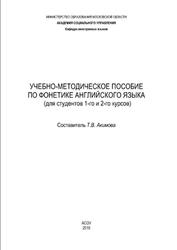 Учебно-методическое пособие по фонетике английского языка, Акимова Т.В., 2010 — Настоящее пособие представляет собой сборник упражнений и текстов по фонетике английского языка. Составлено в соответствии с программой обучения английскому языку … Книги по английскому языку
Учебно-методическое пособие по фонетике английского языка, Акимова Т.В., 2010 — Настоящее пособие представляет собой сборник упражнений и текстов по фонетике английского языка. Составлено в соответствии с программой обучения английскому языку … Книги по английскому языку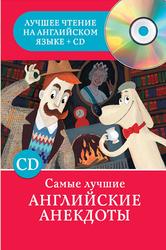 Самые лучшие английские анекдоты, Матвеев С.А., 2014 — Книга предназначена учителям русского языка, учащимся старших классов средней школы и студентам педагогических колледжей. Пособие содержит подробный анализ различных типов … Книги по английскому языку
Самые лучшие английские анекдоты, Матвеев С.А., 2014 — Книга предназначена учителям русского языка, учащимся старших классов средней школы и студентам педагогических колледжей. Пособие содержит подробный анализ различных типов … Книги по английскому языку

